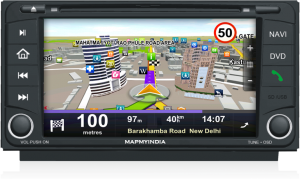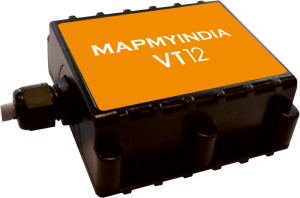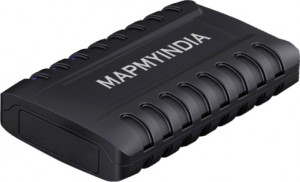Text: Bhargav TS
MapmyIndia, a digital map data, navigation, tracking and location-based service products (LBS) and GPS and GIS-based systems integration service provider trail blazes Advanced Driver Assistance Systems (ADAS) which packs plenty of electronics systems into it. The new system that the company is working on will help on achieving better fuel efficiency and gives several other alerts.
The Company’s Director, Shivalik Prasad said, “It’s always exciting to develop safety services for drivers, who spend so much time on the road. Our focus is on becoming the most innovative system provider in ADAS. Our new system which is being developed will help in fuel efficiency, alert signs, speed breaker indications and traffic lights. These technologies are now packed for automatic transmissions and they will be made available for manual transmissions too. But the slope profile needs to be examined and data need to be collected and the technologies have to be tailor made to make these befit for manual transmissions.”
MapmyIndia also has technologies which can sense blind spot and alert drivers indicating accident prone zones. Ride shares also could be effectively taken care by mapping the route the end users take. Autonomous car will cruise on the roads in a decade, but again cost matters a lot. Prasad feels that in India the per capita income now is 2200 US dollars and there are green shoots now visible that the per capita income would drastically go up. The disposal income would be high and Indians would start opting top end models in all cars. Car is an emotional buy to fulfill the ego satisfaction and hence the aspirations of the people will surely pocket OEMs with huge profits.
Prasad revealed that, “Lot of passenger car OEMs have large capacities and all want to strike the chord of Rs 6-10 lakh market with fully loaded features. Small things even matter a lot when we speak about electronic fitment in the vehicles. Infotainment has become a fixture to retrofit nowadays and electronics has consumed the considerable potion in the passenger car segment. The electronic and mechanical ratio could easily be termed as 20:80 in the passenger cars and commercial vehicles trail behind as of now with 10:90. But unorganised traffic markets like India needs electronic assistance to way forward as at least this would mitigate serious effects popping in due to negligence.”
There are 2-3 big players in this industry amongst 180+ players working on application interfaces (APIs). The major players are working closely with logistics companies and there are APIs available for distance tracking, curvature tracking and the list goes on and all these are plugged into different Enterprise Resource Planning (ERP). Commenting on the next generation cars Prasad beamed that, next gen cars are so very proactive and are well-versed in locating the curvatures by itself and automatically bend with the respective indicator lights on. There is an API available which could sense grenade 20-30 metres away and automatically slows down the vehicle. Internally there should be a protocol with ECUs and the system would respond based on the inputs.
Highlighting the massive growth in automobile industry Prasad asserted that, “We are in a plan to power our partners and to have a win-win relationship with component suppliers. We would back them with different market needed technologies and add more value to technology needs.” It is more than 3 years now the Indian market started using 3G and it is now the time for 4G. Evolution is a never ending phenomena with respect to IoT and 5G has also started speeding the overseas markets. All technologies discussed hitherto are available in India but it is just that fine tune required and all OEMs are expected to come-up with then-fully loaded navigation.
“With lot of players in the Indian market to cater the technologies, we are still turtling and resistant to change. One of the reasons could be cost consciousness but that should be cleaved as the traffic and infrastructure seem impending. Cost is one of the challenges the company is facing commercially but there are lot of technical difficulties too with respect to navigation programming. With the address system unorganised and very poor demarcations drawn with chaotic old and new house numbers similarities in street names technology innovation becomes a milestone. Everything has to to be organised. We are trying to build definition for all these irrelevant data and working closely with Ola and ecommerce companies building database with pin codes. The entire ecommerce industry has to run apps to get precise maps.”
The company is now flipping its coin to focus more on commercial vehicles. Lot of initiatives have been taken to implement child tracking system and in Delhi it is flagged already. With the help of the device the child will be monitored and ensure their safety travel in the bus. The same will be introduced in South India and the company would be hawk-eyed to get the response out. Bike market is also nuanced by Prasad and he states that, “Bikes are resistant to technologies as of now. But top end bikes do welcome us to fit in them the cluster based mobile phone that has GPS technologies but they are not commercially launched yet. There are challenges with respect to technology fit in the bikes.”
Highlighting on the usage of hardware devices the Director communicated before signing off that, “All hardware devices required are imported from Taiwan, South Korea, China and Europe. We develop and give the product to tier 1 suppliers and in-turn they supply to OEMs. It is the OEM which decides the fit with necessary integration. But in aftermarket our products are available which could be retrofitted.”
















Leave a Reply